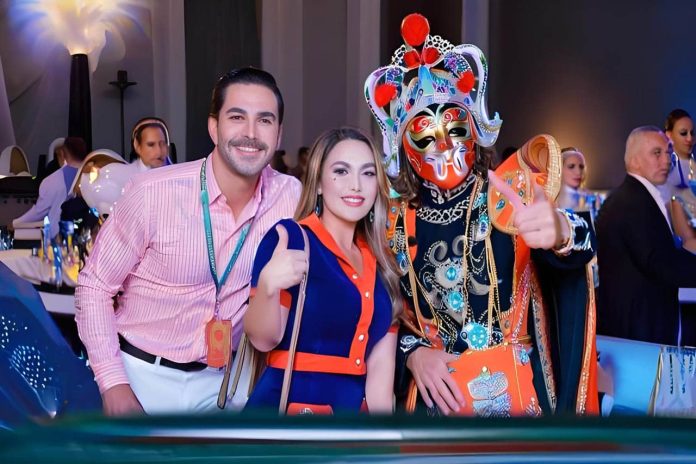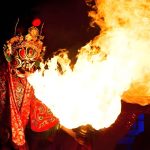First Impressions: The Mystery of the Masks
When I first heard about “Bian Lian” (变脸, Face-Changing), a signature act of Sichuan Opera, I was skeptical—how could performers switch masks in the blink of an eye? But witnessing it live at Shufeng Yayun Theater in Chengdu left me in awe. The elaborate costumes, dramatic music, and the sheer speed of the transformations made it one of the most unforgettable performances I’ve ever seen.
The Performance: A Dazzling Display of Skill & Secrecy
The show began with traditional Sichuan Opera elements—acrobatics, comedic skits, and high-pitched singing. But when the face-changing master took the stage, the energy shifted.
What Made It So Captivating?
✔ Lightning-Fast Mask Changes – One moment, the performer wore a red mask (symbolizing loyalty); the next, a blue one (for cunning), then gold (divine power). The switches happened so fast, I couldn’t spot the trick—even when he “changed faces” right in front of me!
✔ Interactive Moments – At one point, the actor walked into the audience, playfully flicking his sleeve near spectators, making masks appear and disappear without touching his face.
✔ Fire-Spitting & Martial Arts – The act blended drama, acrobatics, and danger, with the performer spitting fire before a final, rapid series of mask reveals.
The Cultural Meaning Behind “Bian Lian”
I later learned that face-changing originated from ancient Chinese theater, where masks conveyed a character’s emotions and fate. Traditionally, only a few masters knew the secrets, passed down through strict apprenticeships. Today, it’s considered a national treasure—and seeing it live felt like glimpsing a well-guarded art form.
Symbolism of Colors:
-
Red = Bravery, loyalty
-
Black = Fury, determination
-
White = Treachery, deceit
-
Gold/Silver = Gods, spirits
My Personal Reaction: A Mix of Amazement & Curiosity
At first, I kept trying to figure out the trick—were there hidden strings? Magnets? But as the performance continued, I stopped analyzing and simply enjoyed the magic. The rhythmic drumming, the exaggerated movements, and the audience’s gasps created an electric atmosphere.
What Struck Me Most:
-
The precision of the movements—every flick of the wrist or turn of the head hid a calculated reveal.
-
The performer’s expressiveness—even with masks, his body language told a story.
-
The audience’s reactions—locals cheered at familiar cues, while tourists (like me) stared in disbelief.
Critique: The Good & The Less Impressive
✅ Pros:
-
Unmatched artistry – Unlike digital effects, this was real, live magic.
-
Cultural immersion – The theater’s intimate setting made it feel authentic.
-
Engaging pacing – The mix of comedy, drama, and spectacle kept everyone hooked.
❌ Cons:
-
Short duration – The face-changing segment lasted only ~10 minutes (I wanted more!).
-
No photos allowed – To protect trade secrets, recording was banned (understandable but frustrating).
Final Thoughts: Why “Bian Lian” Is a Must-See in Chengdu
This wasn’t just a performance—it was a living piece of Chinese heritage. The combination of mystery, skill, and storytelling made it far more than a “magic trick.” It left me with a deep appreciation for Sichuan Opera and the artists who dedicate their lives to preserving it.
Tips for Future Viewers:
-
Book front-row seats – The closer you are, the more astounding the changes appear.
-
Research beforehand – Knowing the color symbolism enriches the experience.
-
Visit Shufeng Yayun – One of Chengdu’s most reputable theaters for authentic shows.
Rating: 10/10 – A True Highlight of My Chengdu Trip!
If you visit Chengdu, don’t miss “Bian Lian”—it’s a dazzling, mind-bending spectacle that stays with you long after the masks come off.






